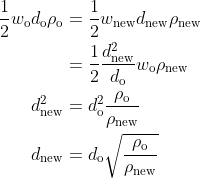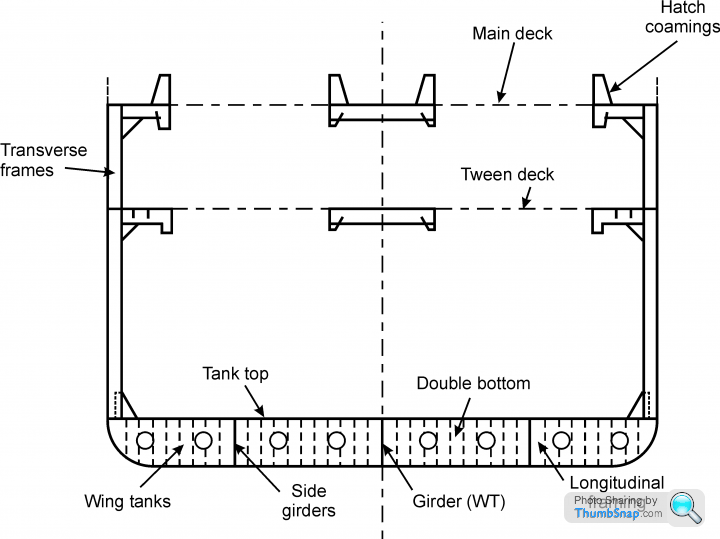Unblocking the Suez Canal
Discussion
With the Suez Canal currently blocked by the Evergreen Evergiven container ship, a thought occurred to me. If the density of the water in the vicinity of the ship could be increased, e.g. by adding salt to Dead Sea concentrations or greater, could the ship be floated off?
If a coffer dams of, say, thin polythene sheet were used to contain the high-salt concentration water around the ship within the greater body of the canal water, what would happen, levels and pressure-wise?
I appreciate that the amount of salt and polythene required would be vast, so I'm not too concerned about the practical considerations.
If a coffer dams of, say, thin polythene sheet were used to contain the high-salt concentration water around the ship within the greater body of the canal water, what would happen, levels and pressure-wise?
I appreciate that the amount of salt and polythene required would be vast, so I'm not too concerned about the practical considerations.
Apart from the aquatic life genocide you are proposing its not a problem to float it. Its alrwady floating. Its wedged on the bank/canal bed. The need to break the suction and friction holding the boat in place.
Once they dig out enough of the bank to make a winding hole it will be freed by the tugs.
Once they dig out enough of the bank to make a winding hole it will be freed by the tugs.
I like your thinking! Her draught is 14.5 m. Saturated salt solution has a density of 1.2 g/cm^3 - 20% more than pure water. Sea water (which presumably is what is in the Suez now) is not much more dense than pure water, at 1.025 g/nm^2 In either case, the ship must displace the same mass of water per unit length.

where rho is density. Let's assume that under the water she's basically a triangle of length equal to her draft d_o pointing down, with some width w_o at her (conventional) waterline. Now, by similar triangles,

Now we can proceed to rearrange things.

And by plugging in nembers for densities and her 'normal' draught we find that her new draught is 13.4 m - a lift of over a metre!
A small additional effect could be achieved by cooling the water around her to 4 C. But in this case the change in density is only around 0.1%

where rho is density. Let's assume that under the water she's basically a triangle of length equal to her draft d_o pointing down, with some width w_o at her (conventional) waterline. Now, by similar triangles,

Now we can proceed to rearrange things.

And by plugging in nembers for densities and her 'normal' draught we find that her new draught is 13.4 m - a lift of over a metre!
A small additional effect could be achieved by cooling the water around her to 4 C. But in this case the change in density is only around 0.1%
Edited by EliseNick on Friday 26th March 03:25
Edited by EliseNick on Friday 26th March 03:25
GliderRider said:
With the Suez Canal currently blocked by the Evergreen Evergiven container ship, a thought occurred to me. If the density of the water in the vicinity of the ship could be increased, e.g. by adding salt to Dead Sea concentrations or greater, could the ship be floated off?
If a coffer dams of, say, thin polythene sheet were used to contain the high-salt concentration water around the ship within the greater body of the canal water, what would happen, levels and pressure-wise?
I appreciate that the amount of salt and polythene required would be vast, so I'm not too concerned about the practical considerations.
If you could separate the two different levels of salt water (inside the coffer dam, and outside in the remainder of the canal), there would be a pretty enormous pressure imbalance between the two because of the density difference. Polythene wouldn't do it.If a coffer dams of, say, thin polythene sheet were used to contain the high-salt concentration water around the ship within the greater body of the canal water, what would happen, levels and pressure-wise?
I appreciate that the amount of salt and polythene required would be vast, so I'm not too concerned about the practical considerations.
If you could build a coffer dam on each side of the ship and raise the level of the water where the ship is, you could refloat it pretty quickly. The problem, of course, is that building coffer dams isn't that fast unless you have everything to hand.
The "ship stuck in the canal" problem is actually very similar to the "we don't have enough ventilators" problem from last year!
Ie, the issue is the time period available and not the actual technical solution! This means the "best" solution is simply the one you can arrange to carry out in the shortest possible time.........
Ie, the issue is the time period available and not the actual technical solution! This means the "best" solution is simply the one you can arrange to carry out in the shortest possible time.........
sherman said:
Apart from the aquatic life genocide you are proposing its not a problem to float it. Its alrwady floating. Its wedged on the bank/canal bed. The need to break the suction and friction holding the boat in place.
Once they dig out enough of the bank to make a winding hole it will be freed by the tugs.
I should say based on the chart posted in the other thread they’ll need to dig out a lot more than a winding hole - looks as though about a quarter to a third of the ship is aground.Once they dig out enough of the bank to make a winding hole it will be freed by the tugs.
EliseNick said:
I like your thinking! Her draught is 14.5 m. Saturated salt solution has a density of 1.2 g/cm^3 - 20% more than pure water. Sea water (which presumably is what is in the Suez now) is not much more dense than pure water, at 1.025 g/nm^2 In either case, the ship must displace the same mass of water per unit length.

where rho is density. Let's assume that under the water she's basically a triangle of length equal to her draft d_o pointing down, with some width w_o at her (conventional) waterline. Now, by similar triangles,

Now we can proceed to rearrange things.

And by plugging in nembers for densities and her 'normal' draught we find that her new draught is 13.4 m - a lift of over a metre!
A small additional effect could be achieved by cooling the water around her to 4 C. But in this case the change in density is only around 0.1%

where rho is density. Let's assume that under the water she's basically a triangle of length equal to her draft d_o pointing down, with some width w_o at her (conventional) waterline. Now, by similar triangles,

Now we can proceed to rearrange things.

And by plugging in nembers for densities and her 'normal' draught we find that her new draught is 13.4 m - a lift of over a metre!
A small additional effect could be achieved by cooling the water around her to 4 C. But in this case the change in density is only around 0.1%
Edited by EliseNick on Friday 26th March 03:25
Edited by EliseNick on Friday 26th March 03:25
 The underwater hull shape is closer to a rectangle than a triangle though.
The underwater hull shape is closer to a rectangle than a triangle though.Typical midship section below which would continue over the majority the length .

Matt_E_Mulsion said:
condor said:
Why don't they remove some of the containers to lighten the load?
With what and onto what? I can't imagine it's that easy with the ship being positioned where it is and how it is.EliseNick, thank you for doing the maths. That's a fair bit of research and number crunching you did for me. I'm sure those trying to unstick the ship would be very grateful for a metre less draught right now.
CraigyMc, with a 20% difference in density, that highly saline water would be doing its best to do an inverted mushroom cloud through the normal seawater, so yes, a sheet of polythene wouldn't be likely to withstand the forces involved.
CraigyMc, with a 20% difference in density, that highly saline water would be doing its best to do an inverted mushroom cloud through the normal seawater, so yes, a sheet of polythene wouldn't be likely to withstand the forces involved.
Edited by GliderRider on Friday 26th March 19:59
Matt_E_Mulsion said:
condor said:
Why don't they remove some of the containers to lighten the load?
With what and onto what? I can't imagine it's that easy with the ship being positioned where it is and how it is.Helicopter harvesting Christmas trees
Gassing Station | Science! | Top of Page | What's New | My Stuff





